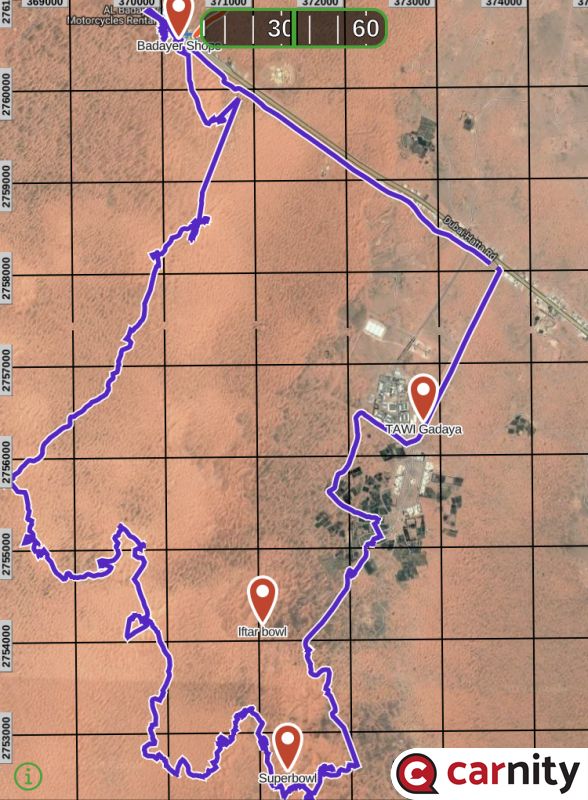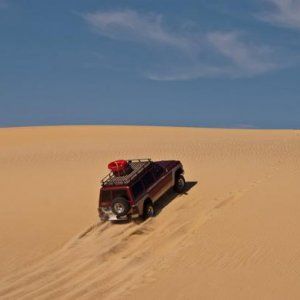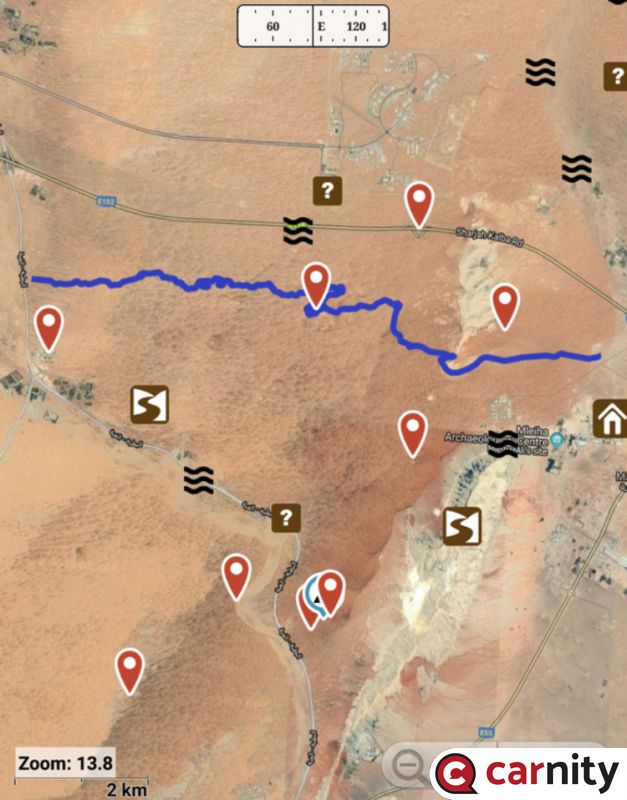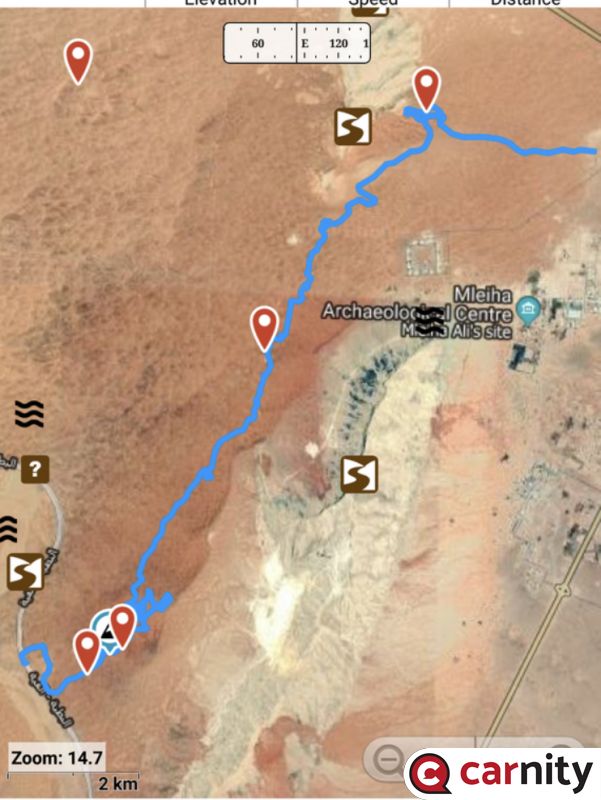-
4.9 Stars ⭐⭐⭐⭐⭐ 448 Google Reviews
-
Posts
7,039 -
Joined
-
Last visited
-
Days Won
290 -
Country
Belgium -
Carnity Points
5,585 [ Donate ]
Content Type
Profiles
Forums
Advice
Business Listing
Car Deals
Recall
OBD II Car Diagnostics
Guest lead capture
STORE
Events
Gallery
Blogs
Everything posted by Frederic
-

722D4F3D-86CB-4783-85C5-27CC92BBD7AC.jpeg
Frederic posted a gallery image in Relaxed morning drive Pink Rocks 6 Dec 2019
-

F87EF77B-4454-441A-95C3-691BDC08EA6B.jpeg
Frederic posted a gallery image in Relaxed morning drive Pink Rocks 6 Dec 2019
-

B96BB4E6-0F00-43ED-9490-37FB07EC025B.jpeg
Frederic posted a gallery image in Relaxed morning drive Pink Rocks 6 Dec 2019
-

Fewbie Afternoon Drive - Badayer - 6th Dec 2019
Frederic replied to Emmanuel's topic in Off-Road Club's Offroad Drives
You did great Alessandro ! Hope your guests enjoyed it a bit though 😀 You managed great Xaf ! -
We were all happy to see you back @srini62 your super positive attitude and patience is a blessing In this hobby. You showed confidence and drove great today, that FJ felt at home in the desert under your skillful command !
-

9E8A8327-49AD-4446-A681-707E570DC573.jpeg
Frederic posted a gallery image in Fewbie Afternoon Drive - Badayer - 6th Dec 2019
-

865F7BF0-468B-4D85-86F7-0FAE68ADD910.jpeg
Frederic posted a gallery image in Fewbie Afternoon Drive - Badayer - 6th Dec 2019
-

41AC5966-9157-4668-8E3D-6560DAF3C14E.jpeg
Frederic posted a gallery image in Relaxed morning drive Pink Rocks 6 Dec 2019
-
You have the 3.8 so I’m not sure if you can fit smaller rims on the front due to the brake discs. Better to verify first before buying.
-
Different ways of crossing sand dunes Throughout the Carnity Offroad briefings you might have heard the terms "straight up and straight down", "side sloping", or "criss-crossing", and these are basically different techniques that we use in desert for crossing the sand dunes. Each come with its own risks and by learning and understanding the technicalities behind them i hope we can all learn faster and get more confidence in executing them. I hope below tutorial gives a more clear understanding on the subject and we can use it for future reference. 1) Straight Up - Straight Down Carnity Offroad Level: Newbie and Fewbies Description This technique is one of the very first we learn to apply when learning offroading. The trick is to approach the dune straight up with "JUST" enough momentum to make it through, but not too much to damage bumpers or cause a jump. One should always take into account the resistance that the sand offers based on different areas, and even more on different seasons. Most sand dunes have two sides - The windward side, which is the side where the prevailing wind blows on, and can be recognized by the wavy lines of the sand. This is the side where we ride on because the sand is more compacted and firm to drive on. - The slip-face side, this the softer backside (smooth side, no lines) of the dune which is generally not recommended to climb on, but this technique can later be learned as you advance through the off-road levels (slip-face attack). How to tackle It is advisable to start off at the bottom of the dune with applying a decent amount of power, and start letting go of the gas once you have climbed 75% of the dune. By that point the momentum should carry you further, and as soon as the car front wheel touches the crest, leave the gas completely or apply a bit of gentle braking when needed, to let you slide on other side of the dune safely. In fact the perfect technique is finding that right amount of momentum that you don't even need to apply brakes on the other side. Some gentle blips of throttle can help at the top to push you over the edge, as you learn and master this first step. If you run out of momentum going upwards to cross the dune, do not worry or panic, this is called a REFUSAL. Gently reverse and slowly come back in a straight line as you have climbed up. Announce on the radio that you have a refusal. Reverse up far enough so you can take a second attempt but this time with a bit more momentum. Risk Level: Low to medium. Approaching too slow will increase refusal and might cause stuck at the crest. Approaching with excessive speed might damage the bumpers or cause a vehicle to jump. Apply gentle throttle and slowly increase after learning. Take note that every dune is different and each approach will need to be made slightly different in terms of speed. Associated Risks: If you approach the dune too fast, more likely you will cause the bumper damage because your reaction time will be reduced substantially at very high speed. 2) Side-Sloping Carnity Offroad Level: Fewbie and upwards Description This technique is very fun and addictive, but it needs to be executed with a clear mind and a good experience on the behavior of the car. That is the main reason why this technique is only used from Fewbie level onwards. It is very critical to understand how gravity works and as we always says: " DO NOT FIGHT GRAVITY ". this applies to this technique most of all. When you approach a dune that you want to side-slope on, you need to carry enough momentum to get you through. This does not necessarily mean FULL throttle, because that depends on the type of dune. As soon as your car is on an incline, it will have the natural tendency to try to come down. The more momentum you carry, the further you will get. It is extremely important that you do not fight this by going higher up the dune at that point, but to steer down in a smooth way. Braking at this point is also very dangerous. While doing side sloping try to choose smooth path as possible and avoid stepping on rock, bushes or bumps that can bounce you and disturb the whole balance and tip you off or result in dangerous fish-tailing or tire pop-out at high speed. EVERY MOVEMENT OR ACTION YOU DO WHILE SLIDE-SLOPING NEEDS TO BE DONE IN A SMOOTH WAY, SUDDEN BRAKING OR EXTREME STEERING CAN LEAD TO ROLL-OVERS. Best practice: Always visually mark the entry and exit of the dune that you wish to do side sloping on. Stick to the initial plan as far as possible and exit safely. If you are new to this, then watch and observe how others have done before and try to replicate that as much as you can. The best thing to keep in mind is to think about "HALF MOONS" What i mean with that is that you should never make 90° turns during any kinds of these activities, but make smooth half moons during approaching dunes or crossing them. Risk Level: Medium. With proper training and guidance you can eliminate the risk of a roll-over for 95%, but one should always be aware of the risks involved and take all measures possible to minimize these. Keep both hands at the steering wheel and your full attention on the view ahead. Do not get distracted ! Associated Risks: If your vehicle is lifted more than 4 inch of OEM stock height then your 4x4 center of gravity will be less, and this will increase the risk of roll-over or flip by 50%. Same goes for bouncy (non-standard/rated) suspensions. 3) Criss-Crossing Carnity Offroad Level: Fewbie and upwards Description Criss-crossing is the art of riding the ridge of the dune and crossing over to the other side. Also here it is vital to understand that the approach towards the ridge, as well as the crossing over needs to be done in a smooth, half moon way. So basically you approach the dune along the length, you can stay on the ridge for as long as you want, but don't lose momentum at this point, or you will be crested lengthwise in the exact middle. Now the trick is to choose the right point at which you cross towards the other side. This feels scary at the beginning, but soon you will get the hang of it, and cross ridges without panicking at all. Make the criss-cross movement again in a half-moon method as seen below. Below picture shows the right and wrong way to criss-cross a dune. On the left side you will see that the approach is smooth and as soon as you cross over to the other side you gently steer down. Braking at this point is again very dangerous. In the right-side scenario, the angle of approach is very sharp, and during higher speeds this can result in a roll-over. EVERY MOVEMENT OR ACTION YOU DO WHILE CRISS-CROSSING NEEDS TO BE DONE IN A SMOOTH WAY, SUDDEN BRAKING OR EXTREME STEERING CAN LEAD TO ROLL-OVERS. Risk Level: Medium. With proper training and guidance you can eliminate the risk of a roll-over for 95%, but one should always be aware of the risks involved and take all measures possible to minimize these. Keep both hands at the steering wheel and your full attention on the view ahead. Do not get distracted ! Associated Risks: If your vehicle is lifted more then 4 inch of OEM stock height, then your 4x4 center of gravity will be less and this will increase the risk of roll-over or flip by 50%. Same goes for bouncy (non-standard/rated) suspensions. 4) Hill Climbing While this technique is not immediately necessary to cross dunes, climbing a mighty big dune will bring some fun and adrenaline in the equation. At first, you might feel intimidated and not sure if your car can handle this. With the right techniques at hand you can at least make a safe attempt and see how far you can get. This technique can be practiced from Newbie level onwards on small hills, and later you will learn to approach taller dunes from Fewbie level and up. Again it is extremely important to make a smooth "half-moon" circle at the top. If you run out of momentum and come to a standstill, DO NOT attempt to make a turn, but put your car in 4LO, and slowly reverse down the dune while keeping your wheels straight. The low gearing will help you in keeping that slow pace. As you begin to learn this, it's always advisable to make a smaller U-Turn to learn how your car reacts and how your mind reacts when you take the first turn on top of dune. This needs to be done with confidence and without any doubt or fear, so that you don't brake on top and do the complete U-Turn without braking and in a very smooth manner. Practicing on small U-Turn will build your confidence and after 5-10 small U-Turn attempt you can try higher and higher by understanding your vehicle dynamics and limitations. Risk Level: Medium. With proper training and guidance you can eliminate the risk of a roll-over for 95%, but one should always be aware of the risks involved and take all measures possible to minimize these. Keep both hands at the steering wheel and your full attention on the view ahead. Do not get distracted ! Associated Risks: If your vehicle is lifted more than 4 inch above OEM stock height, then your 4x4 center of gravity will be less and this will increase the risk of roll-over or flip by 50%. Same goes for bouncy (non-standard/rated) suspensions. Safety of all offroad enthusiasts is the most important thing. This is an extreme hobby that brings confidence, thrills, and people together as a family. We can only do whatever we can to make all safety instructions clear and concise but in end it's up to the offroader behavior to understand all risk and associated risk involve and enjoy safely. Open for any questions or comments !
-

Garage that can do Flag Mount in few hours
Frederic replied to Zed's topic in Offroad General Discussion
Welcome to Carnity Zed ! The suction cup is a pretty decent option for many offroaders that don't want to drill holes or do other modifications. But from what i've seen it only works best if the pole and flag are very light. The carbon fishing pole is probably a bit too bulky and that might cause the stress. From the fellow offroaders that use the smaller flagpoles from Dragon Mart, they seem to be having little to no issue, but i agree having it properly mounted is always the best option. Specific 4x4 shops will probably sell you a AOR flagpole, and install it for you. Ramy Automotive is one of those, but there are many others around of which i don't have that much experience with. Our other senior members will chip in with more info, or we can have a chat about it tomorrow. -

Pajero 2007-2011 Tiptronic Upshift Issue
Frederic replied to Frederic's topic in Mitsubishi Pajero Forum in UAE
Yes you’re right, the upshifting occurs in all modes, but remember @Roshan Abraham his Pajero that would up shift in 4H but not in 4HLc. I think he has a 2010 model. Coming winter I’ll bring out the wifeys 3,8 Pajero a few times and experiment with the settings to see if we can find a solution. Julien his car indeed didn’t want to wake up completely. Could be many reasons for that. Like you said checking the basics is a good start. The 3.5 is under powered but should at least possess the “roar” and power without too much restriction. -
For all the Pajero 2007-2011 owners around, this topic has been addressed in the past on Mitsubishi forums and was brought up here a while back, but i wanted to compile all information in one topic to finally condense all information and share our experiences. The famous issue that Gen4 Pajeros built between 2007 and 2011 have, is the automatic upshifting in tiptronic mode once the rpm reaches 5200rpm. While for overlanding or other offroading activities this is not so much of an issue, it is a BIG issue for the dunebashers amongst us if attempting a climb on the bigger dunes (Faya, Sweihan, Liwa, etc...). With some practice you might try to stay just below that 5200rpm point to keep it in the gear, but this is far from easy and on bumpy dunes keeping your foot stable on the pedal is easier said than done. On a 3.8 Pajero the torque reaches its peak at around 2750 rpm and starts to decline after 4500 rpm. At that point the horses have to take over and your 184 kW (247 HP) is reached at 6000 rpm. When limiting at 5200 rpm you would lose out 14 kilowatts (18 Hp). While looking on the other Mitsubishi forums, 2 options have come forward which i will describe below: 1. Omani Gear Hack:The Omani Gear Hack works by disabling the output speed sensor which will stop the car from auto shifting. This hack is at your own risk only and although it solves the upshift issue, it puts your car in limp mode and will activate your check engine light, which would also hide other potential dangers ! You can find the detailed instructions attached. It mentions to use the car in 4LLC mode which we do not recommend doing. Maybe the hack works in 4H or 4HLC too, but haven't received confirmation of that yet. 2. Unichip RPM Cutoff: This is a lesser intrusive solution using Unichip to limit the RPM to 5200. The Unichip ECU piggy back computer with the RPM cutt off option allows you to put a limit on the RPM to prevent the gear from autoshifting in sports mode. Unichip comes with a 5 map selector, so you set one of the maps on the RPM limit at 5200 then car will not upshift on all gears when in tip tronic mode. However you will not be able to unlock the power beyond 5200rpm... On top of that, most of the GEN4 Pajeros have the ASC (Automatic Stability Control) that needs to be switched off during offroading. If your ABS is still kicking in, than it is also advisable to remove the ABS relay in the engine bay. (relay, not the fuse as these ones are really hard to pull out). Your car will now change in a Christmas tree dashboard. Looking at all these issues to get a "newer model" car to behave as it should in the desert, it comes as no surprise that many dune bashers revert back to using older cars which don't have all these sensors on board. PS Does any of you have experience with the Pedal Commander, and would it have any benefical effect on the sluggish reaction of the Pajero ? Pajero Gen 4 Gear Lock _ (Omani Gear Hack) Stops Gear Autoshift (1).pdf
- 30 replies
-
- 10
-

-

-

-

-
Have a look at attached article from our Outback buddies that tested a list of compressors. Not all of them are available here but it's an interesting read and gives lots of basic information on what to look for when buying a compressor. https://www.toughtoys.com.au/media/commerce_products/14/4WD169-036-054-FEATURE-air_2.pdf 4WD169-036-054-FEATURE-air_2.pdf
-
After using both the Bushranger Supermax and the Camel Brand Single Cylinder DM compressor I came to the following remarks: The Bushranger Supermax does a really good job, but is slightly slower than the Camel compressor. The good thing is that it hardly heats up and you can still disconnect the hose easily without burning your hands. I’ve done 8 tyres nonstop a few weeks back and it didn’t break a sweat (100% continuous duty). It’s really quiet too. The Camel brand compressor is loud, and after 4 tyres I have to wear gloves to remove the hose, but all in all it hasn’t failed on me yet and they are cheap to get.
-
-
Ooh that’s indeed a good deal. Although i was very disappointed to see that a spray can of Rustoleum Truck Bed spray costs 30 dirhams in Speedex DIP while I paid 59 in Ace Motor City 😱.
-
Damn you’re right. Wonder why I keep bringing Renault in this 🧐
-

257E296C-0846-4A40-AA4C-CCEDE3F4F010.jpeg
Frederic commented on Frederic's gallery image in Newbie / Fewbie - Maliha - 29 Nov 2019
-
Ow yes... I mixed the Renault Diane with the Citroen 2CV.
-

C94FA75A-A869-440B-8A4A-8BD1CBAEB845.jpeg
Frederic commented on Frederic's gallery image in Newbie / Fewbie - Maliha - 29 Nov 2019
-

Newbie / Fewbie Morning Drive - Maliha - 29th Nov 2019
Frederic replied to Srikumar's topic in Off-Road Club's Offroad Drives
It was a pleasure meeting the two of you. You both have adventurous hearts and I’m sure that little Wrangler will be the perfect desert companion ! You both did great on your first drives. Hope to see you both again soon ! Tot binnenkort !- 20 replies
-
- 5
-

-
- offroad drive
- desert drive
-
(and 2 more)
Tagged with:
-

257E296C-0846-4A40-AA4C-CCEDE3F4F010.jpeg
Frederic posted a gallery image in Newbie / Fewbie - Maliha - 29 Nov 2019
-

DA798C78-0852-4A96-A177-75E04A830144.jpeg
Frederic posted a gallery image in Newbie / Fewbie - Maliha - 29 Nov 2019













